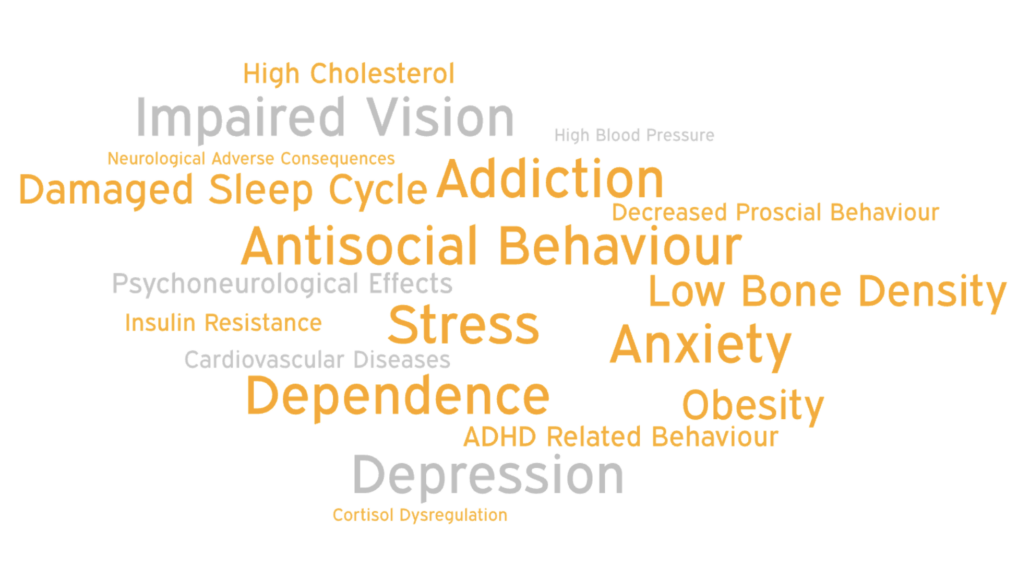GET OFF YOUR PHONE!!!
By Daria and Matias
Can you beat the average attention span and read this feature for more than 8 seconds without stopping?
How long could you read before checking your phone?
Attention span: the amount of concentrated time one can spend on a task without becoming distracted.
The title seems aggressive we know, but it represents our genuine concern for the damage social media and mobile devices are causing us. Today, bings and buzzes from our phones will grab our attention faster than anyone or anything else can. Young people in particular are struggling to focus on tasks such as reading and listening for long periods of time. Over the past 20 years our attention spans on screens have shrunk from two and a half minutes to forty-seven seconds for normal tasks. On screens, and social media in particular, this time is even shorter. More and more studies are showing higher screen times are related to a multitude of mental and physical health issues. This feature explores the psychology behind our shortening attention spans and our growing addictions to the devices around us. Students from Odder Hojskole give there own take on phone usage, their concerns and solutions to managing screen-time.
Picture this scenario: You’re engrossed in reading a book at university. It’s crucial to understand this complex topic and it demands your full focus. Suddenly, you hear this:
It’s annoying, right?
You basically face two options:
1.Immediately grab the phone, postponing the dull book for later.
2. Ignore the notification, attempt to speed-read the book, and motivate yourself to check the message later.
Regardless of your choice, your attention has already waned. Your train of thought on the book’s contents has come to a complete halt.
Depending on your self control, you could spend anywhere from 10 seconds to a couple of hours checking what the buzzing was. It may lead you down the rabbit hole of Tik Tok or Instagram Reels with their endless scroll features.
But the fact is: on average, it takes about 25 minutes to get back to what you were doing after being interrupted according to a study by Gloria Mark at the University of California, Irvine. Whether it’s because we get stuck after a notification or we are using them for work, we spend a lot of time on our phones.
“I can almost feel it burn in my pocket because I really want to look. Did something happen?”
While our screen time is increasing, our attention spans are shortening, particularly in our generation, Gen Z, and younger. It’s early days, so we’re yet to see the full effect on young people who are living more and more in the digital world. But why is it happening?
The exciting features on our phones are conditioning our brains to find traditional activities, such as reading, less engaging. So the buzz on your phone might not even stop you from reading the dull university text. You might just get bored and pick it up because you need something to look at.
The dynamic content offered by platforms like TikTok, Snapchat, or Instagram is naturally much more appealing to us. The bright colors and satisfying videos are like desserts for the brain.
“A task, reading has not changed. But our expectations of the user experience have changed” – Psychologist Gemma Briggs.
This is an example of how content creators use visual tactility. Pairing a primary video with a clip of something satisfying like cake decorating or a good Subway Surfers run keeps viewers hooked for longer.
Some readers may be familiar with split videos like this on short video platforms like Tik Tok, and Instagram Reels. Almost every social media platform has a feature where one can watch ‘shorts’. Short but highly stimulating videos full of colour and animation. Thousands of tech engineers work on miniscule features to optimise your addiction to their platforms.
“It’s as if social media companies are taking behavioral cocaine and just sprinkling it all over your interface and that’s the thing that keeps you like coming back and back and back.”
– Azi Raskin
Aza Raskin, inventor of the infinite scroll feature found in most social media platforms now regrets his invention.
This modern phenomenon raises concerns first pointed out by Georg Franck, writer of an article named, ‘The Economy of Attention’ in 1998. However, spending a significant part of our day on platforms like TikTok or Instagram unintentionally disconnects us from the real world. This poses a significant challenge to finding joy and luxury in spending time with family, friends, or even our thoughts.
Here’s the scary part.
Researchers have found the psychological effects of phone dependency includes but are not limited to symptoms of depression, suicidal tendencies, content-influenced negativity, heightened stress hormones, and poor sleep quality. According to the world happiness report, depression rates in high income countries have climbed significantly in the past decade. It’s difficult to imagine all the different problems and their causes. But some of these issues could be effecting you right now.







Follow us